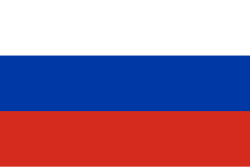 Russian tricolor flag | |
| Total population | |
|---|---|
| Approximately 1,300,000 Russian-speakers [1] | |
| Regions with significant populations | |
| Jerusalem, Tel Aviv, Haifa, Ashkelon, Ashdod, Bat Yam and many other places | |
| Languages | |
| Russian, Hebrew, Russian Sign Language, [2] Shassi | |
| Religion | |
| Judaism, also Russian Orthodox Church, non-religious, Secular Judaism | |
| Related ethnic groups | |
| Russians, Russian Jews, Ashkenazi Jews |
Russians in Israel or Russian Israelis are post-Soviet Russian citizens who immigrated to Israel and their descendants. As of 2022, Russian-speakers number around 1,300,000 people, or 15% of the Israeli population. [3] [4] This number, however, also includes immigrants from the Soviet Union and post-Soviet states other than Russia proper. [1] [5]
Contents
Some of the immigrants are not considered Jewish according to the Halacha, which defines a Jew if their mother is Jewish or they formally converted to Judaism. This makes it difficult for many of those Russian Israelis who are not recognised as Jewish by the chief rabbinate to get married or buried in Israel. [6] According to the Law of Return, anybody with at least one Jewish grandparent is eligible to become an Israeli citizen. Because of the Soviet Union's policy of state atheism and Russia's historically large Jewish population, there were some mixed marriages between Russian Jews and ethnic Russians during the Communist period. Some Russian Israelis have Israeli citizenship by marriage, as the Law of Return also allows the non-Jewish spouses of Jews to claim Israeli citizenship. A few Russian Israelis are instead descended from Russian Subbotnik families, who have migrated to Israel over the past century. [7]
Most Russians in Israel have full Israeli citizenship. Israeli Russians are involved in the country's economy on all levels and have made invaluable contributions to Israeli society, particularly in the cultural, scientific, high-tech, medical, and education fields. One in four staff members at Israel’s universities now are native Russian speakers. [6] Many Russian Israelis choose to preserve their language and culture, There are Russian language newspapers, television stations, schools, and social media outlets based in Israel such as Channel 9, Pervoe radio, Vesty and others. Many Russian Israelis also celebrate Russian holidays like Novy God and Victory Day.

